Victorians loved a good mystery. Crime and the detection of it came into focus in 1842, when the Metropolitan Police Force created a separate department dedicated to investigation. These new ‘detectives’ captured the public imagination, and were incarnated through the pens of Wilkie Collins, Charles Dickens and Sir Arthur Conan Doyle.
But alongside these seemingly modern interests, the Victorians still nurtured a passion for tales of romance and melodrama. ‘Sensation’ novels were hugely popular; jangling nerves and making the flesh creep as the characters’ secrets were slowly revealed. Even more prolific were the penny dreadfuls, packed with far-fetched crimes and supernatural horrors such as Varney the Vampire.
These elements contributed heavily to the birth of the Victorian Gothic genre as we know it today, with its characteristic long 19th century setting, gaslit atmosphere, and and sense of the mysterious. Looking back from our modern perspective, we see a time when ideas of progress mixed uneasily with old superstitions. Recent authors have revelled in the opportunities Victorian Gothic offers to flick between criminal and supernatural agencies, trapping the reader halfway between the ‘real’ and unseen worlds.
The uncertainty of what to believe deepens the mystery. Rather than ending with a thorough explanation from the all-knowing detective, Victorian Gothic novels are often left open to interpretation. Do you accept the rational solution, or is there something more sinister at play?
To showcase the many possibilities of the genre, I have picked a selection of my favorite Gothic novels from contemporary authors and some lesser-known Victorian reads full of mystery and suspense.
Victorian Reads
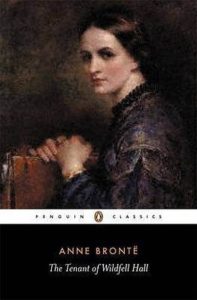
Anne Bronte, The Tenant of Wildfell Hall
Most lists of Gothic fiction rightly include Jane Eyre and Wuthering Heights, but somehow manage to forget this book by the youngest Bronte sister. It is every bit the equal of its literary siblings. The story begins with the arrival of mysterious Mrs Graham at the long-dilapidated Wildfell Hall. Beautiful but secretive, she hides herself away in the crumbling house with only her five-year-old son and trusted servant for company. A farmer sets out to win her heart, unaware of the brutal history she hides. An absolute milestone in feminist literature, Bronte’s hard-hitting social commentary is revealed slowly through the medium of private diaries.
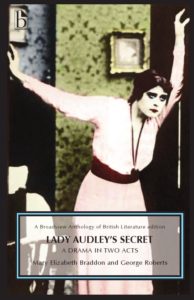
Mary Elizabeth Braddon, Lady Audley’s Secret
This is one of the earliest examples of the ‘sensation’ novel, made popular in Victorian England by Wilkie Collins. Featuring dogged detectives and terrible secrets, it would today be shelved as psychological suspense. While the plots strikes a modern reader as melodramatic, Braddon does an excellent job of building atmosphere and tension. Lady Audley is a refreshing anti-heroine, striking a blow against her many insipid contemporaries.
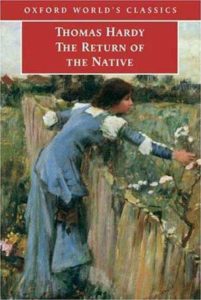
Thomas Hardy, The Return of the Native
I rarely see Hardy featured on lists of Gothic fiction, despite his dedication to characterising the landscape and frequent references to folklore. This one is set on a bleak moorland with a life of its own. Eustacia Vye, rumoured locally to be a witch, longs to escape the boredom of her home, but forces larger than herself keep her snared. Pagan bonfires, an eclipse, snake bites and a blood-coloured reddleman give a supernatural feel to a tale of identity and marital breakdown.
Contemporary Gothic
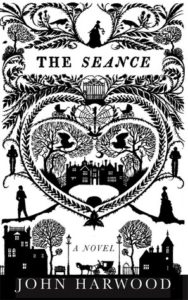
John Harwood, The Séance
Few things scream ‘Victorian Gothic’ as loudly as séances and mesmerism. Mix the two with a decaying family home, strange scientific apparatus and disappearing people, and you have this reverential pastiche by Harwood. What sounds, in summary, a little overblown is actually a compelling mystery with well-drawn characters and atmosphere that drips from the pages. The Séance would be a great introduction to anyone starting out in reading the genre.
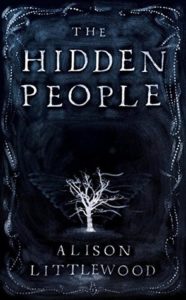
Alison Littlewood, The Hidden People
One of the many wonders of Littlewood’s story is its deviation from the tropes. Rather than a crumbling mansion in desolate countryside, she presents a homely cottage surrounded by verdure. Instead of winds and rain, the action takes place at the height of summer. Yet this is still a Gothic novel, infused with suspicion and obsession. Albie travels to the village of Halfoak to investigate the horrific murder of his young cousin. But rather than blaming human agency, the locals spin him a tale of fairies and changelings. Living alone in his cousin’s house, his scepticism is soon put to the test. A great blend of both human and supernatural monsters.
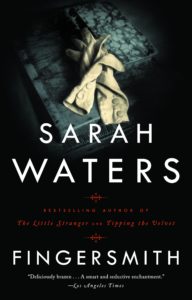
Sarah Waters, Fingersmith
Quite aside from its status as a Gothic masterpiece, this is simply one of the most enjoyable novels I have ever read. I will never forget how I felt when I reached the twist … and I envy anyone who has yet to start the book! The orphaned child of a murderess, Sue Tinder grows up in the company of baby farmers and petty thieves. Posing as a lady’s maid, she plots to deprive hapless Maud Lilly of both her fortune and her freedom. But conscience gets the better of her, and she begins to find herself strangely drawn to her intended victim. A remote country house, asylums and taboos aplenty, Fingersmith ticks every Gothic box.

Jane Harris, Gillespie and I
Prepare yourself: you’re in for one heck of a ride. The joy of both this and Harris’s other Victorian novel, The Observations, is that they are disturbing yet fun reads at the same time. Harriet Baxter, an achingly polite and manipulative spinster, finds herself drawn into the world of talented young artist Ned Gillespie and his family during the summer of 1888. She recounts how unexpected tragedy prevented Gillespie from reaching his true potential, but the newspapers are telling a very different story … It is hard to describe this dark tour de force without giving too much away. While the setup is far from conventionally Gothic, you are in no doubt of the nature of this book by the time you reach the last page.

Essie Fox, The Goddess and the Thief
Fox has made a name for herself writing in the Gothic genre, and it is not difficult to see why. This offering of greed, deception and jealousy is my favourite of hers so far. Orphaned Alice lives with her Aunt Mercy in Windsor, a world away from her previous home in India. Yet while Mercy purports to be a spirit medium, Alice is developing powers of her own, powers that seem to link both her native and adopted countries. Mysterious Mr Tilsbury promises to help her– but can he be trusted? Centred on the infamous Koh-i-Noor diamond, this novel seamlessly interweaves myths from two cultures. The result is fresh, alluring and deliciously creepy.
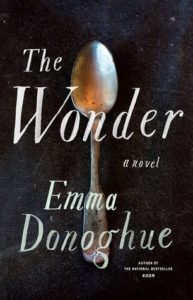
Emma Donoghue, The Wonder
Best known for the award-winning Room, Donoghue has also written a raft of dark and compulsive historical novels. This, her latest, follows veteran nurse Lib Wright to a small Irish village where a miracle has supposedly taken place. Lib’s new patient, Anna, has survived for months without food. She claims to be eating manna from heaven, but not everyone is convinced. While Lib tries to find a rational explanation for Anna’s predicament, she is caught in an atmosphere of hardship and religious fervour. Dealing with tough ethical choices, this is a claustrophobic read that tugs on the heartstrings.
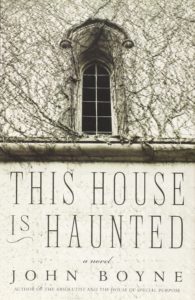
John Boyne, This House is Haunted
A little bit Turn of the Screw, a touch of The Woman in Black, Boyne’s tale of obsessive love makes the hairs rise on the back of your neck. Governess Eliza Cain is horrified to discover that all previous occupants of her post at Gaudlin Hall have met with a violent end. Her pupils are clearly keeping a secret, yet no adults appear to answer her questions. Making full use of the tropes, this is a good old-fashioned ghost story to curl up with on a winter’s night.

















